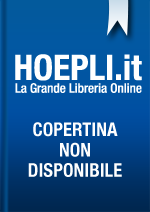Preface Role of chemical management services in industries Introduction to chemical management Chemical management services (CMS) Eco-processing of textiles Eco-processing Eco-bleaching Eco-dyeing Eco-finishing Eco-printing Ecological dyeing process Introduction CO2 dyeing Polyester CO2 dyeing machine CO2 dyes New concepts in eco-friendly processing Introduction Researches for organic processing Introduction to eco-friendly processes Serving resources in textiles Dow Corning and denim processing Environmental impact solutions Introduction Protect your data and your planet A commitment to the environment The world of eco-fibres Introduction Characteristics of eco-fibres Classification of eco-fibres Natural origin eco-fibre Hemp bio-commodities Regenerated fibres Recycled synthetic fibres Recycled polyester Recycled nylon Fibres from waste products Blends Drawbacks of using eco-fibre products Verification Comparison of fibres Hazardous substances in clothing and other textiles Introduction Alkylphenols Phthalates Brominated and chlorinated flame retardants Azo dyes Organotin compounds Perfluorinated chemicals Chlorobenzenes Chlorinated solvents Chlorophenols Short-chain chlorinated paraffins Heavy metals: cadmium, lead, mercury and chromium (VI) Herbal dyeing process Introduction Facts of chemical processing Desizing Bleaching Mordanting Dyeing Finishing Recycling plant Major differences between various dyes Major herbal dyes available Carbon footprint in textile industry Introduction Greenhouse gases and global warming Global warming and the textile industry Primary and secondary footprint Carbon footprint and the textile industry Strategies for reducing carbon footprint Revolutionary dyeing technologies Indian textile industry oblivious New technologies and in textile dyeing and finishing Introduction Requirements Electrochemical process technology Supercritical fluid dyeing technology Plasma treatment technology AirDye technology Dyeing technologies for the future Introduction Options to overcome the environmental problems in the future AirDye technology Conclusion Importance of blue sign in textile industry Introduction Blue is for clean First products in the marketplace The principles of bluesign Three steps to achieving bluesign standard What’s blue and what’s black Ecology and high-tech go hand-in-hand Science – A better tailor than nature Processing of recycled polyester fiber in textile industries Introduction Manufacturing process Properties of recycled polyester fiber Uses Waterless dyeing process Introduction Supercritical fluid CO2 / supercritical fluid dyeing technology Dyeing polyester and other synthetics Reductions in operating costs Availability Role of green technologies in industries Introduction Goals of green technology Types of green technology The future of chemistry Salt-free reactive dyeing of cotton Introduction Modification of cotton fiber Electro-coagulation process for the waste water treatment Introduction What is chemical coagulation? What is electro-coagulation? ETP operating for 1000 m3 per day (electro-coagulation plant) ETP operating for 1000 m3 per day (physical chemical plant) Comparison of chemical coagulation and electro-coagulation AirDye technology Introduction How is AirDye different? Take a very close look Advantages of AirDye technology Conclusion World of recycled fibres Recycling processes Special processes Recycling facts Benefits of textile and clothing recycling Recycled polyester Recycled nylon/polyamide Recycled cotton Recycled wool Application of green chemistry in industries Introduction to green chemistry Developments in green chemistry Applications of green chemistry Life Cycle Assessment (LCA) of textiles Introduction LCA calculator Life Cycle Assessment of cotton fibre LCA: A decision-making tool for recycling processes in textile industry Life cycle of a T-shirt The life cycle of making a T-shirt What is ZDHC (Zero Discharge Hazardous Chemicals)? Introduction Main successes of ZDHC Group Main challenges to the ZDHC Group Working with Greenpeace The Joint Roadmap Benefits to participation Governance policies and procedures of the zero discharge programme Greenpeace slams latest ZDHC Roadmap ZDHC identifies key transparency tool ZDHC Group reports latest progress H&M commitment towards ZDHC Actions taken so far PUMA Roadmap towards zero discharge of hazardous chemicals What is Higg Index? Introduction Vision Mission Current focus Where we are: the Higg Index 1.0 A new yardstick Scope The Higg Index Higg Scoring Who’s on Board? Where we’re headed? How does the Higg Index work? All about Mark and Spencer Plan A Introduction Giving back: a charity partnership between M&S and Oxfam Next phase of Plan A Greenpeace and its toxic campaigns Introduction Detox campaign LV, Versace, Dolce&Gabbana fail in Greenpeace’s toxic chemicals test Gap pledges to eliminate toxic chemicals, but Greenpeace isn’t happy Heros or zeros? Different strokes H&M pledges to eliminate toxic chemicals from supply chain by 2020 Detoxing H&M 25.9 Greenpeace targets Zara in global Detox campaign Restricted substances lists (RSLs) Introduction Methodology Amines APEO and NPEO Benzotriazole (MBT) Chloro-organic carriers Chrome VI Flame retardants Sustainable fibres Cotton HEMP Bamboo Soya Eucalyptus Tencel Recycled PET Wool Importance of Compliances for brands and retailers Toxic avengers Greenpeace study The importance of SIN (Substitute It Now!) List Introduction Substitute It Now! What is the SIN List vs. the SVHC List? Index











